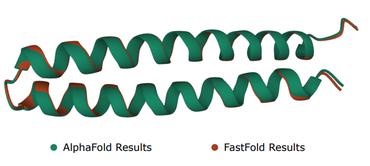tFold-TR: Combining Deep Learning Enhanced Hybrid Potential Energy for Template-Based Modeling Structure Refinement
Protein structure prediction has been a grand challenge for over 50 years, owing to its broad scientific and application interests. There are two primary types of modeling algorithms, template-free modeling and template-based modeling. The latter one is suitable for easy prediction tasks and is widely adopted in computer-aided drug discoveries for drug design and screening. Although it has been several decades since its first edition, the current template-based modeling approach suffers from two critical problems: 1) there are many missing regions in the template-query sequence alignment, and 2) the accuracy of the distance pairs from different regions of the template varies, and this information is not well introduced into the modeling. To solve these two problems, we propose a structural optimization process based on template modeling, introducing two neural network models to predict the distance information of the missing regions and the accuracy of the distance pairs of different regions in the template modeling structure. The predicted distances and residue pairwise-specific deviations are incorporated into the potential energy function for structural optimization, which significantly improves the qualities of the original template modeling decoys.
PDF Abstract
